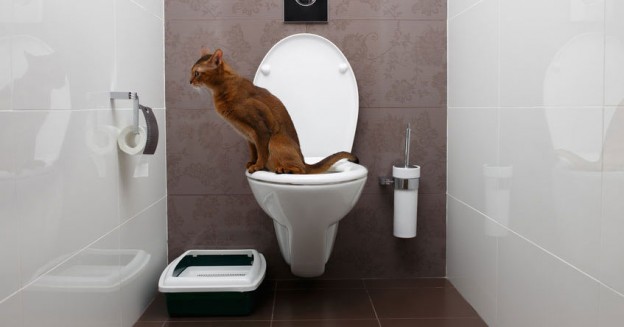Dangers of Disposing Cat Poop in Your Toilet - Precautionary Steps
Dangers of Disposing Cat Poop in Your Toilet - Precautionary Steps
Blog Article
We've uncovered this post on How to Dispose of Cat Poop and Litter Without Plastic Bags below on the web and concluded it made perfect sense to relate it with you on this site.

Intro
As feline owners, it's necessary to be mindful of exactly how we throw away our feline buddies' waste. While it might seem hassle-free to flush feline poop down the toilet, this method can have destructive repercussions for both the atmosphere and human health.
Alternatives to Flushing
Thankfully, there are more secure and more accountable means to dispose of cat poop. Take into consideration the adhering to alternatives:
1. Scoop and Dispose in Trash
The most typical technique of taking care of cat poop is to scoop it into an eco-friendly bag and throw it in the trash. Be sure to use a devoted trash scoop and deal with the waste quickly.
2. Use Biodegradable Litter
Opt for biodegradable cat clutter made from products such as corn or wheat. These trashes are environmentally friendly and can be securely disposed of in the garbage.
3. Hide in the Yard
If you have a yard, consider hiding cat waste in a designated location away from veggie gardens and water sources. Make certain to dig deep enough to stop contamination of groundwater.
4. Set Up a Pet Waste Disposal System
Invest in a family pet waste disposal system especially designed for pet cat waste. These systems utilize enzymes to break down the waste, reducing odor and environmental effect.
Health and wellness Risks
In addition to ecological worries, flushing feline waste can likewise pose wellness dangers to people. Pet cat feces may contain Toxoplasma gondii, a parasite that can cause toxoplasmosis-- a potentially extreme disease, particularly for pregnant females and individuals with damaged immune systems.
Environmental Impact
Purging pet cat poop presents harmful virus and bloodsuckers into the water supply, presenting a significant threat to aquatic environments. These impurities can negatively impact marine life and compromise water quality.
Conclusion
Responsible animal ownership extends beyond providing food and sanctuary-- it also entails correct waste monitoring. By avoiding flushing cat poop down the toilet and going with different disposal techniques, we can minimize our ecological impact and safeguard human health.
Why Can’t I Flush Cat Poop?
It Spreads a Parasite
Cats are frequently infected with a parasite called toxoplasma gondii. The parasite causes an infection called toxoplasmosis. It is usually harmless to cats. The parasite only uses cat poop as a host for its eggs. Otherwise, the cat’s immune system usually keeps the infection at low enough levels to maintain its own health. But it does not stop the develop of eggs. These eggs are tiny and surprisingly tough. They may survive for a year before they begin to grow. But that’s the problem.
Our wastewater system is not designed to deal with toxoplasmosis eggs. Instead, most eggs will flush from your toilet into sewers and wastewater management plants. After the sewage is treated for many other harmful things in it, it is typically released into local rivers, lakes, or oceans. Here, the toxoplasmosis eggs can find new hosts, including starfish, crabs, otters, and many other wildlife. For many, this is a significant risk to their health. Toxoplasmosis can also end up infecting water sources that are important for agriculture, which means our deer, pigs, and sheep can get infected too.
Is There Risk to Humans?
There can be a risk to human life from flushing cat poop down the toilet. If you do so, the parasites from your cat’s poop can end up in shellfish, game animals, or livestock. If this meat is then served raw or undercooked, the people who eat it can get sick.
In fact, according to the CDC, 40 million people in the United States are infected with toxoplasma gondii. They get it from exposure to infected seafood, or from some kind of cat poop contamination, like drinking from a stream that is contaminated or touching anything that has come into contact with cat poop. That includes just cleaning a cat litter box.
Most people who get infected with these parasites will not develop any symptoms. However, for pregnant women or for those with compromised immune systems, the parasite can cause severe health problems.
How to Handle Cat Poop
The best way to handle cat poop is actually to clean the box more often. The eggs that the parasite sheds will not become active until one to five days after the cat poops. That means that if you clean daily, you’re much less likely to come into direct contact with infectious eggs.
That said, always dispose of cat poop in the garbage and not down the toilet. Wash your hands before and after you clean the litter box, and bring the bag of poop right outside to your garbage bins.
https://trenchlesssolutionsusa.com/why-cant-i-flush-cat-poop/

Do you really like reading up on How to Dispose of Cat Poop and Litter Without Plastic Bags? Make a short review directly below. We will be interested to hear your opinions about this post. We hope to see you back again in the near future. Kindly take the time to promote this blog entry if you enjoyed reading it. Thanks a lot for your time spent reading it.
Book Your Service Report this page